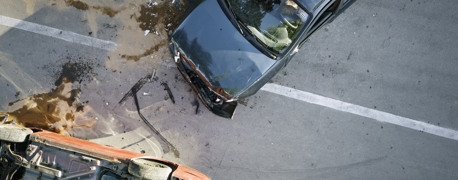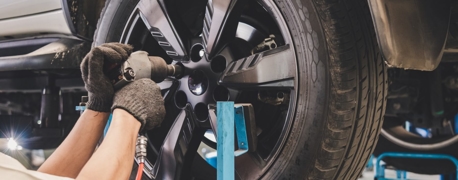T-Bone Car Accidents & Deadly Collision Force
.2112301656217.jpg)
In criminal proceedings, determining the cause of death is a central piece of the investigation. When it comes to car accidents, cause of death is often ignored. “Commonly, [doctors] encounter death in the trauma room and wonder what the fatal injury was,” authors Dale Oller and Erika Rager write. “We are hampered too often in this quest by a system that discourages autopsy when the ‘patient obviously died from injuries sustained in a motor vehicle collision.’”
In Oller and Rager’s 2003 paper, “Craniocervical Dissociation and Pneumocephalus—Two Remarkable Findings on Lateral Films of Patients Killed by T-Bone Motor Vehicle Collisions,” they make the case that the mechanics of how car accidents harm people rarely gets investigated. In most cases, “motor vehicle collision” is as specific as it gets.
As a result, we don’t know much about the difference between specific car accident impacts.
The Most Common T-Bone Accident Injuries
In 2017, researchers attempted to document the difference between different kinds of collisions, including broadside or T-bone collisions. They found that the most common injuries across the board, regardless of impact, were in the neck and lower back.
These injuries were divided into four categories:
- Cervical disc derangement
- Cervical radiculitis
- Lumbar disc derangement
- Lumbar radiculitis
Disc derangement is when multiple tears in a spinal disc allow fluid to leak and put pressure on the nerves. Radiculitis is a pain disorder caused by nerve compression; it can have multiple causes. Researchers found that T-bone collisions were far more likely to result in damaged spinal discs than any other condition, in some cases even more than head-on collisions.
In other words, T-bone accidents were highly likely to result in damage to the spine in the neck and lower back, resulting in chronic, potentially life-changing pain.
Rare but Fatal Impact of T-Bone Collision Force
While researchers can identify common injuries by studying health records and car accident reports, there’s still not a full understanding of what a T-bone collision does to the body. While the cause of an injury after the fact can be determined by a clinician, knowing the risk of injury before it occurs is a “multidisciplinary task involving…crash reconstruction, biomechanics, and epidemiology,” write accident researchers Rami Hashish and Hasan Badday.
Still, we have some idea of how bad T-bone accidents can be.
In the paper from Oller and Rager, the authors recounted the stories of two elderly victims of two separate T-bone accidents:
In the first case, a 67-year-old woman was admitted with no vital signs and no sign of head trauma, but an X-ray showed that she had died from craniocervical disassociation, or internal separation of the skull and spine. In the second case, a 73-year-old woman was admitted with no vital signs and severe ear bleeding. She was x-rayed and found with frontal pneumocephalus, or excess air in her skull. Frontal pneumocephalus can sometimes be caused by a spinal fluid leak, which allows air to get into the brain cavity.
While doctors can guess how broadside impact affected these two women, we won’t know much until there’s comprehensive research into different classes of motor vehicle collisions.
How to Prevent a T-Bone Car Accident
If you’re the victim of a T-bone accident, you’re (by definition) less capable of preventing the accident. However, some public safety researchers theorize that steering aggressively to the right or left can ensure the impact occurs further away from the occupants of the vehicle. Until there’s further research, we can’t know for sure. It’s just a theory at the moment (and one that only works for vehicles with rear-wheel drive).
The Importance of Civil Investigation
The healthcare system and insurers typically don’t want to invest the time and resources into understanding car accidents. For healthcare professionals, addressing the injury (rather than the cause) is the only priority. Insurers have a far less noble reason—it’s simply cheaper to avoid investigating too closely.
That’s why civil trial attorneys and independent investigations are vital to public safety. By making accident reconstruction and biomechanics a matter of public record, we’re able to shed light on how certain types of accidents affect the human body. And, at the same time, we can make sure the victims of such accidents get what they need to rebuild their lives.


